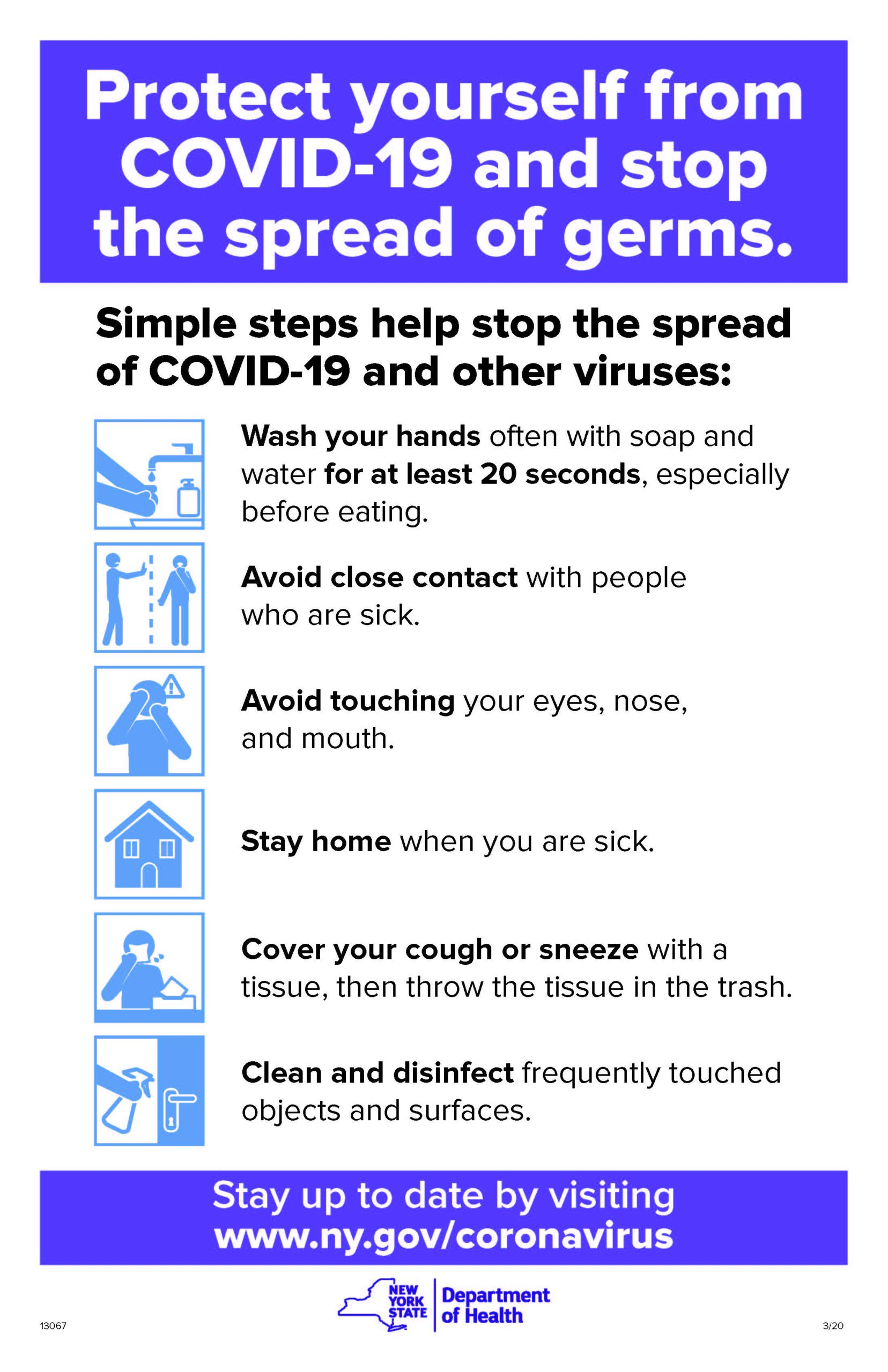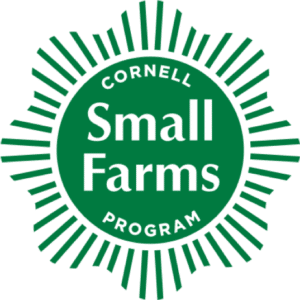Best Management Practices for U-Pick Farms During the COVID-19 Pandemic
Date Published: April 28, 2020
Date Updated: May 5, 2020
U-Pick is a critical direct marketing approach for many of our farms and provides customers with a unique connection to fresh produce grown close to home. In light of what we understand about the spread of COVID-19, new management practices will be needed to protect your farm team and your customers. This document provides recommended practices and communication strategies for U-Pick operations for the 2020 season.
These actions will help protect you and your team as well as reassure customers that you are taking steps to protect them and the produce you grow.
Facts about the SARS-CoV-2 Virus that Causes COVID-19
- The virus is transmitted person to person through respiratory droplets, which is why 6-foot physical distancing is so important.
- There is no evidence that the virus can be transmitted by food.
- It can persist on surfaces for between 24-72 hours which is why sanitation of commonly touched surfaces is important.
- Risks of infection from touching surfaces can be significantly reduced by avoiding touching the face, frequent handwashing, or use of hand sanitizers.
- Cloth face coverings reduce spreading of the virus by those who may be infected but are not showing symptoms and should be used in addition to physical distance and hand hygiene.
One thing is clear: this season will be different than any previous season.
As a grower, you will need to adjust your U-Pick management to reduce risks from SARS-CoV-2 until the pandemic has passed (unknown at this time).
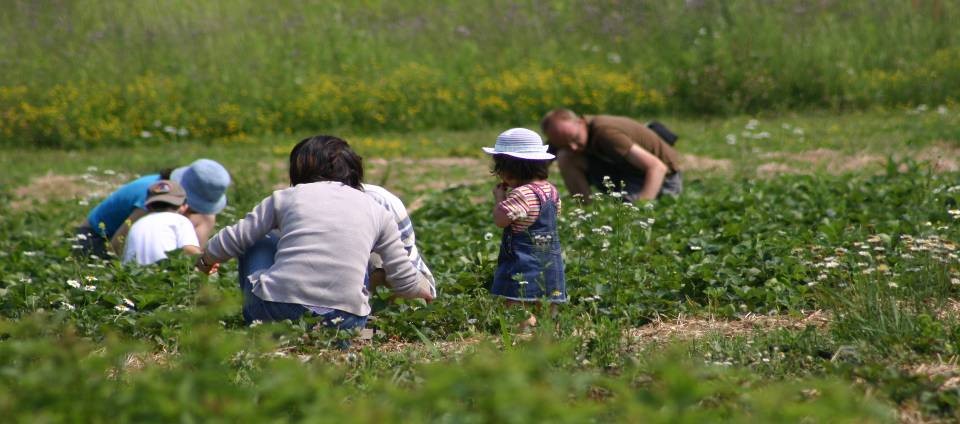
If you are unable to address these COVID-19 recommendations, you may decide not to open for U-Pick this year.
If you or members of your team are in a high-risk category for contracting COVID-19, it may be prudent to consider alternatives to U-Pick for this season.
Alternatives to U-Pick
- Provide custom picking for farm pickup.
- Increase direct sales of picked fruit through farm stands.
- Develop online sales. Cornell Small Farms Program has shared ideas on getting started.
- Join a multi-farm CSA or food hub. Pick fruit for distribution through those networks.
As you prepare for this U-Pick season during the COVID-19 pandemic, you will need to do the following:
- Develop a communication strategy to inform customers about new COVID-19 farm practices.
- Eliminate any entertainment and picnicking activities to reduce congregating on the farm.
- Provide additional handwashing and hand sanitizing opportunities for customers.
- Post signs to emphasize physical distancing and hand sanitation.
- Redesign customer flow to maintain physical distance.
- Separate and redesign check-in and check-out.
- Train your employees on new COVID-19 procedures and policies.
- Add employees to separate weighing of produce from payment and to help with customer management in the field.
- Stay up-to-date on current COVID-19 recommendations from your state departments of agriculture and health.
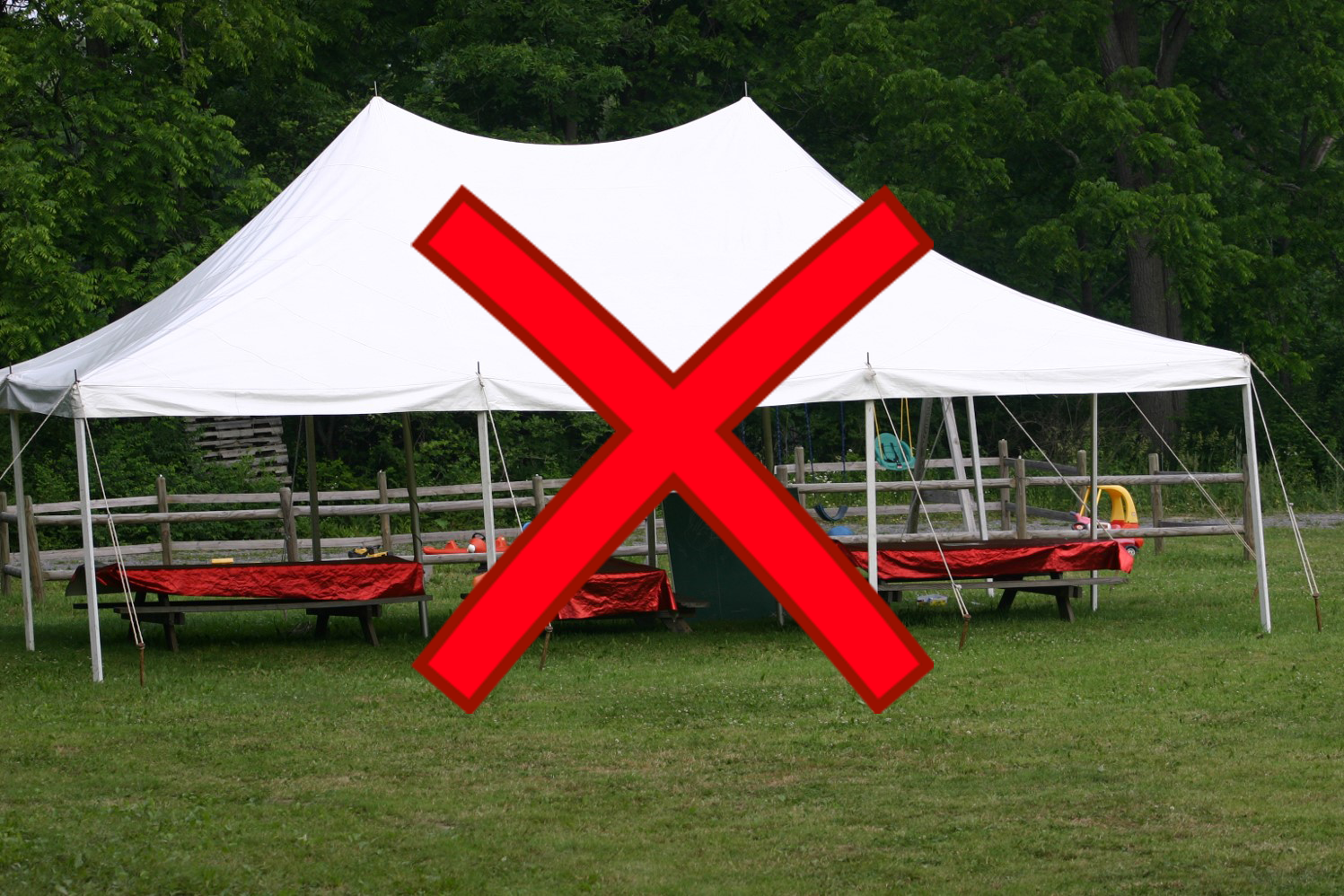
Communicating with Customers
Never before has communication been as critical as it is now. Before customers arrive on the farm, share the proactive steps you will take to protect their health and safety and the need to work together during this time.
Use websites, social media, phone messages, farm signage, newsletters, newspaper ads, or any other way to effectively reach your customers and your community.
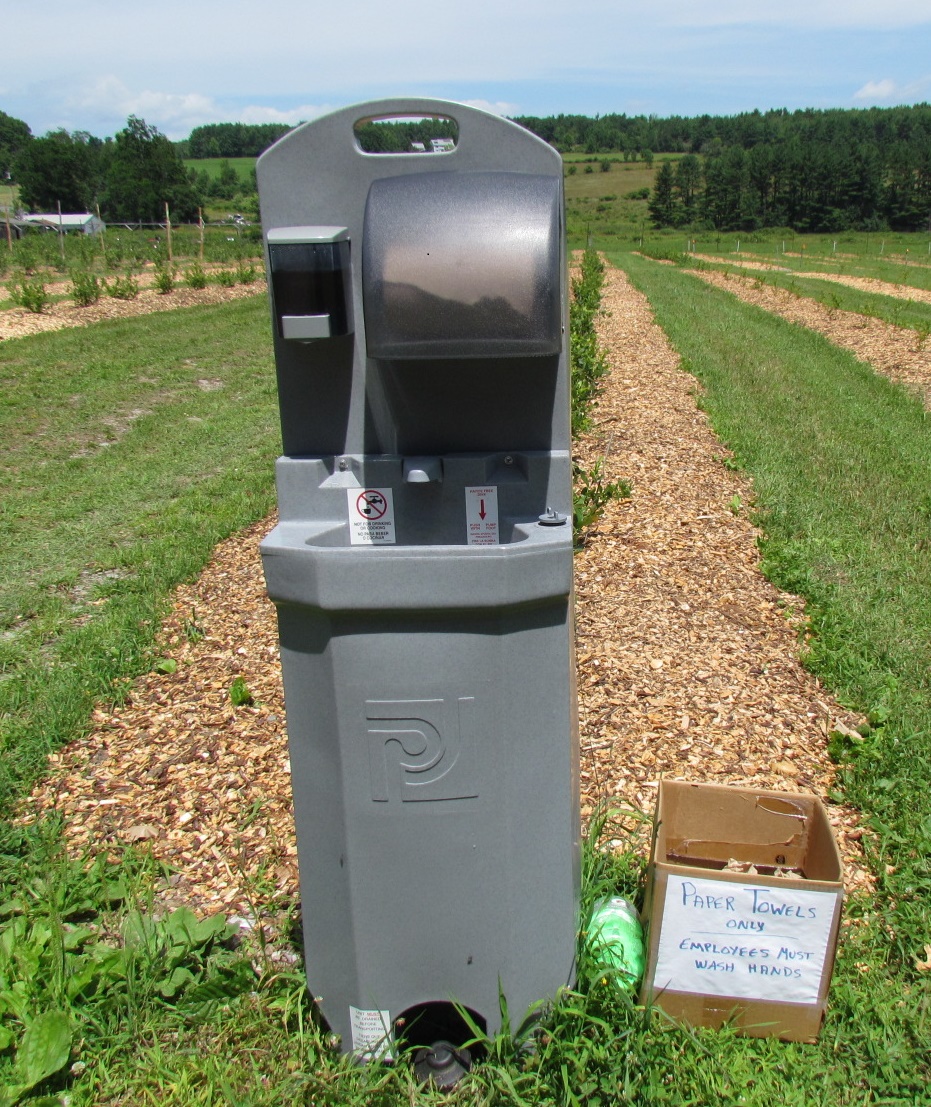
Before the season, build a communication campaign that includes the following:
- Customers should not come to the farm if they are displaying symptoms of COVID-19 or any contagious illness (e.g., fever, vomiting, diarrhea, coughing, fatigue, body aches), or have come in contact with someone who has.
- If customers are displaying symptoms, they will be asked to leave.
- To maintain a 6-foot physical distance during their visit:
- There is a new flow for customers to enter and exit field.
- Only a certain number of groups will be allowed to pick at any one time.
- Families, including children must stay close together.
- There will be no entertainment or picnicking on the farm.
- You will provide new containers for their use (preferred strategy)
- You will provide handwashing stations and hand sanitizer for their use when they arrive at and leave the farm.
- Remind customers to wear cloth face coverings, as per NY COVID-19 guidance dated April 17, 2020: https://on.ny.gov/2yyPqej
- Anyone who is over age two and able to medically tolerate a face-covering must cover their nose and mouth with a mask or cloth face-covering when in a public.
- You do not allow any pets on the farm.
- You will confirm that they understand and will cooperate with these unique requirements before they can pick.
Consider setting-up appointments for picking, to:
- Limit the number of people at the farm any one time.
- Designate specific hours for those most vulnerable to COVID-19 infection (i.e., elderly or those with compromised immune systems).
During the season:
- Welcome your customers with a smile and a wave, but at a distance. No hugging or handshakes.
- Provide daily updates on picking conditions, special hours, pre-picked produce availability, and the COVID-19 management plan.
- Post signs at the farm entry:
- Customers who have symptoms or have been exposed to someone with COVID-19 should not enter for picking.
- Share “Stop the Spread” messages.
- At check-in, post the following statements (written) and request customer verbal confirmation that:
- No one in my family is ill and I have not been exposed to someone sick with COVID-19 in the last two weeks.
- I will maintain a 6-foot distance between me and other customers at all times.
- I will pick cleanly and only in the area assigned to me.
- I understand the direction I should walk to the check out after picking.
Check-in Process and Picking Containers
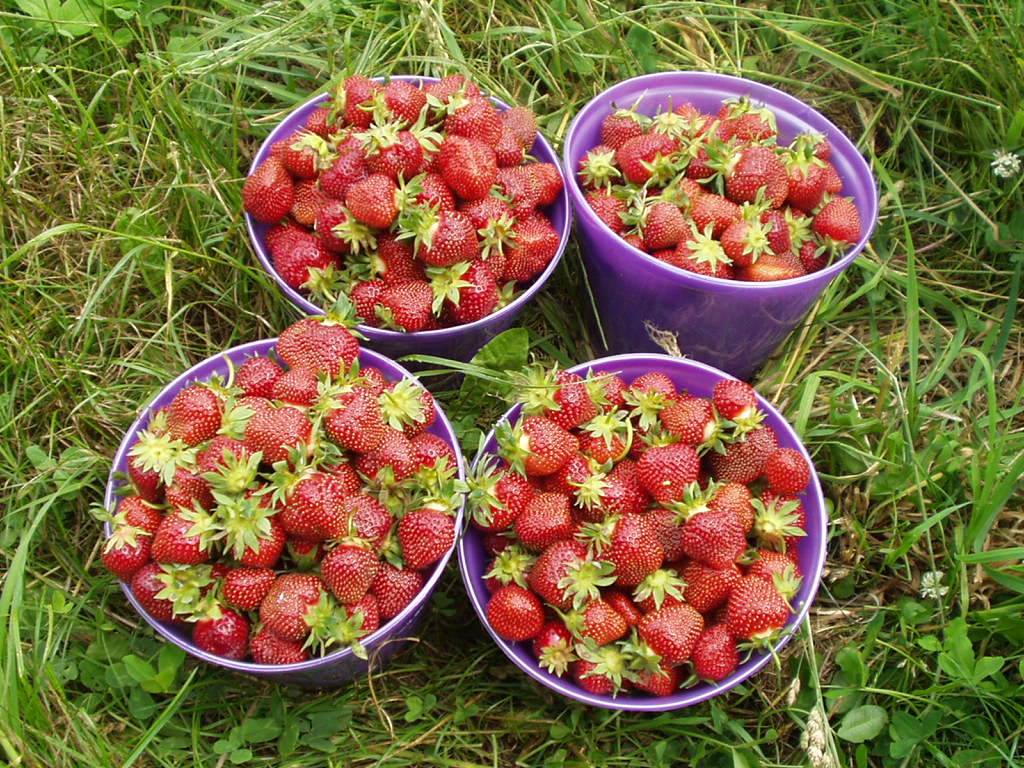
- Designate a one-way aisle to enter the check-in area and post signs to encourage 6-foot separation while waiting.
- If the field is full, encourage customers to wait in their cars.
- Provide hand washing stations (soap, water, single use towels) or hand sanitizer (60% ethanol or 70% isopropyl) for customers as they enter the check-in area
- Rent or build a handwashing station.
- Provide new containers (quarts or buckets) for picking to eliminate the need for sanitizing scales and hands between customers at check-in
- If you choose to allow customers to use their own containers, then:
- Instruct employees on maintaining physical distance.
- Have customers place their container on the scale and step back.
- Tape the weight on the container.
- Have the customer remove their own container.
- Sanitize scale platform between customers.
- If you provide reusable picking containers (e.g., 5 gallon buckets), these must be cleaned with soap and water and sanitized between customers (see Sanitizers).
Planning for Physical Distancing while Picking
The total number of customers that can be picking at any one time will be limited by the number rows that can be used while maintaining a 6-foot physical distance to other customers. For strawberries or vegetables, this will likely be ½ of the total number rows. For raspberries or blueberries, this will likely be equal to the number of rows available for picking.
- Create a one-direction foot-traffic pattern for customers to walk to the field and then return to the payment area.
- Clearly number all of your rows.
- Assign specific rows to each customer, emphasizing the importance of staying in their row.
- For strawberries and vegetables, assign to every other.
- For raspberries, blueberries and trellised crops, assign to every row.
- Emphasize that family groups should stay close to each other, including children.
- Provide each customer with a wire flag that is left where they finish picking.
- The next customer will start picking from this flag.
- Remove these flags each day and sanitize for reuse.
- Avoid moving people with vehicles (e.g. wagons, golf carts) since it will be difficult to maintain 6-foot distance.
- Allow people to drive to the field and locate check-in there.
- If you continue to provide this service:
- Use vehicles to transport fruit from the field, not people.
- Limit rides to those with physical challenges.
- Limit the number of people on the vehicle to maintain at least 6-foot between family groups.
- Provide hand sanitizer on the vehicle.
- Sanitize handrails and surfaces between trips.
- Place an employee in the field to monitor physical distancing and provide new containers so that customers can stay where they are picking.
- Encourage customers to use the toilet before entering the field or after checking out, to limit trips in and out of the field.
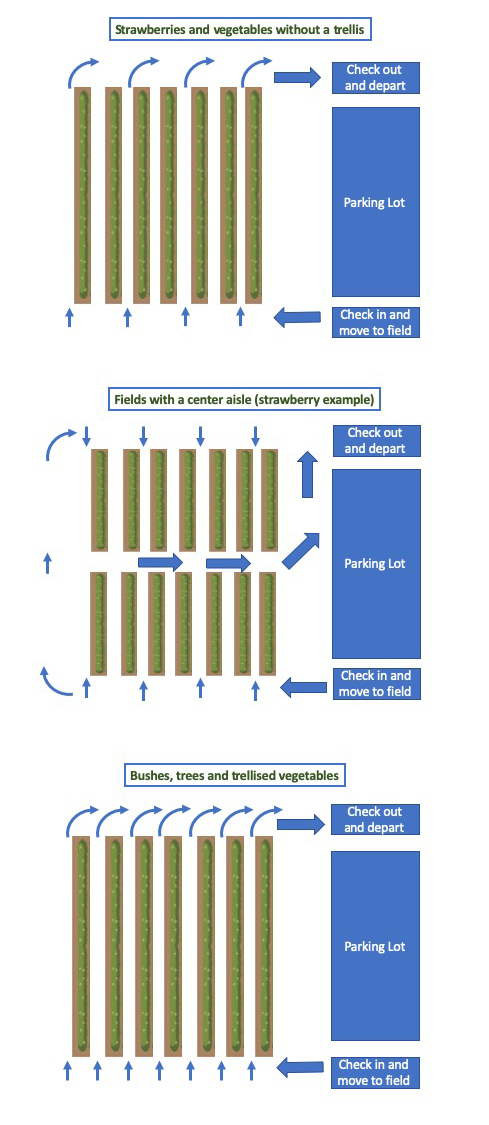
Weighing Produce and Handling Payments
The weighing of produce should be separated from handling of payments and cash, to limit chances of cross contamination between produce and money.
Before the season:
- Prepare to accept credit cards/tap to pay or electronic payments (e.g. Paypal, Venmo, Apple Pay, Cash App) and encourage personal checks to reduce your team’s exposure from handling cash and coins.
- Consider setting a unit price for quarts of produce if you provide new containers. This will minimize handling of produce, create distance with customers, and facilitate faster check out.
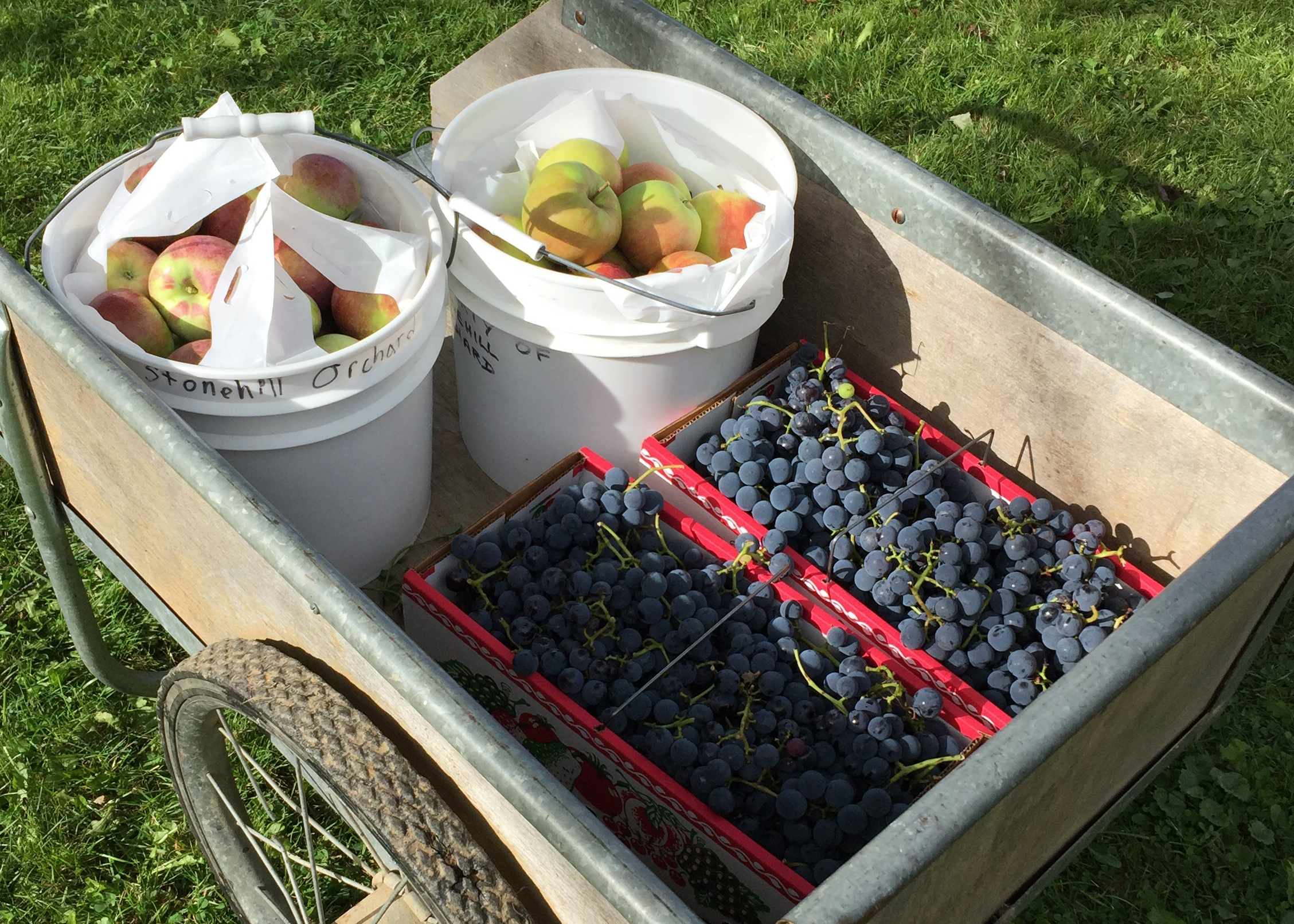
During the season:
- Post signs at check-out to emphasize physical distancing while waiting (e.g. flags at 6-foot intervals).
- Encourage one family member to check out while others proceed to their vehicle.
- Employees must maintain a 6-foot distance to customers at check-out.
- Enforce their use of cloth face coverings when interacting with the public.
- Consider installing clear plastic shields or dividers between employees and customers.
- Designate one employee to weigh produce and another to process payments.
- Hands should be washed or sanitized between transactions (see below for instructions on glove use).
- Scale platform should be sanitized between transactions.
- Direct customers to exit in a different way than they entered, to maintain one-way flow of foot traffic.
- Provide hand sanitizer at exit.
Servicing Toilets
- Provide soap, water and single use paper towels for handwashing, and provide hand sanitizer.
- Provide a garbage can lined with a trash bag for used paper towels.
- Make sure these are anchored and have foot operated lid, if possible, to minimize litter.
- Replace these liners daily.
- Post signs emphasizing importance of handwashing after using facilities.
Cleaning and Sanitizing Surfaces
Establish a cleaning and sanitizing standard operating procedure (SOP) for frequently touched surfaces, such as tables, scale platforms, registers, other electronics, chairs, cash boxes, hand rails and port-a-john handles. Write these down and implement them daily.
For an example SOP that you can adapt to your farm, check out the Sanitation and Postharvest Handling Decision Tree.
- Provide training to employees on sanitation SOPs.
- Use non-porous tables and/or plastic table cloths on wooden tables for check-in and check-out, since these surfaces are easier to clean and sanitize.
- Follow this four-step process for cleaning and sanitizing high-touch surfaces:
- Remove visible dirt and debris.
- Wash with soap and water or appropriate detergent.
- Rinse the surface of debris and detergent.
- Sanitize with a food contact surface approved sanitizer.
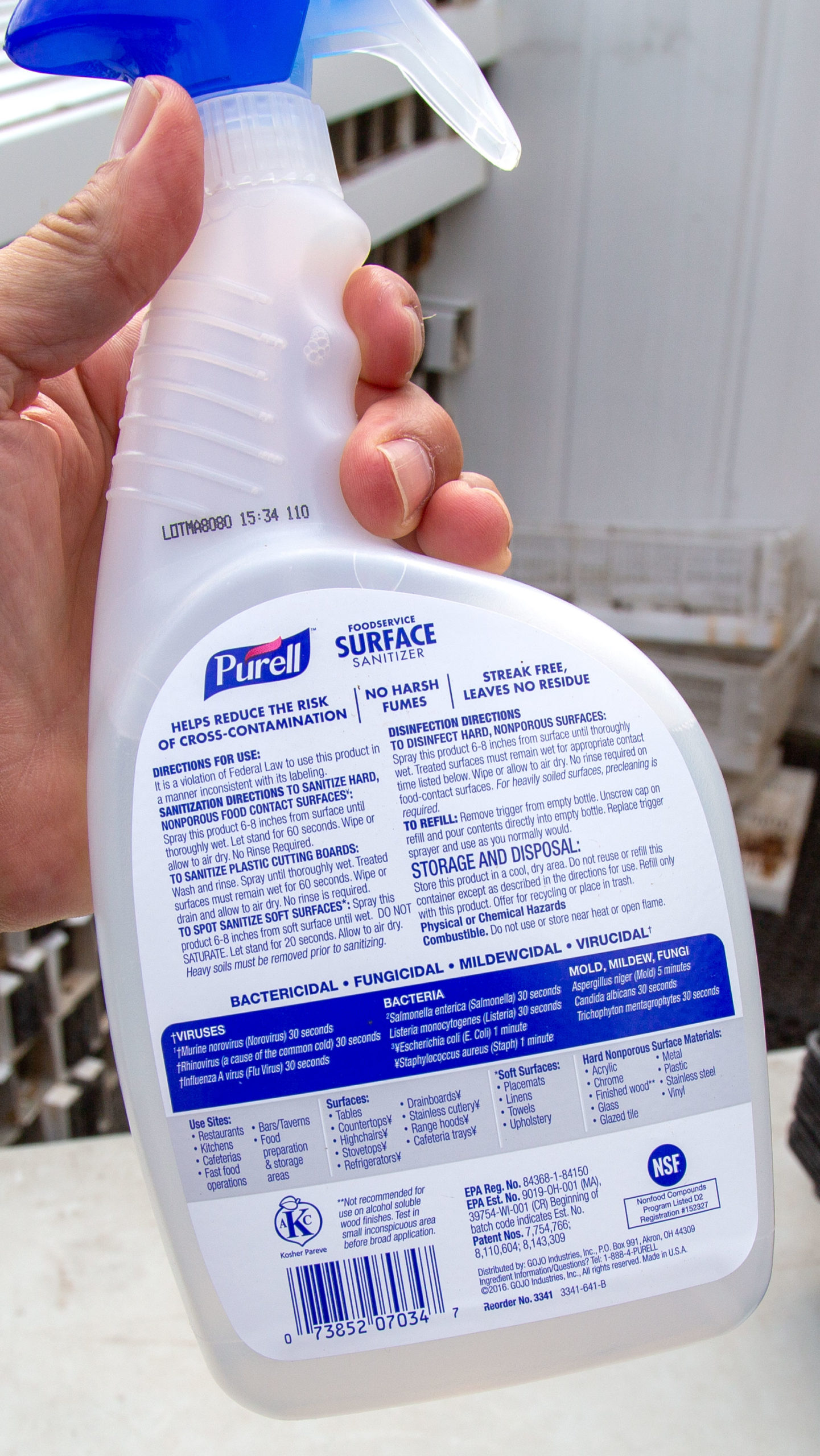
- Check out this list of materials.
- Verify that the product is registered for use in your state and region.
- Follow the label.
- Remember that concentration of active ingredient will differ between products, for example, some bleach productions may contain 6% active ingredient, others 12%. This Sanitizer Dosing Calculator can be used to calculate the amount of product needed.
- Here is another bleach concentration calculator.
- Clean and sanitize the credit card units and sales equipment twice daily.
- Ideally use protective plastic coverings to support ease of cleaning.
- Use 70% isopropyl alcohol wipes.
- Do not spray with sanitizer solutions.
Sanitizers
The Produce Safety Alliance has a fact sheet with information on how to select a sanitizer. Each product’s label provides detailed usage instructions. Ultra Clorox Disinfecting Bleach and Sanidate 5.0 are two examples of sanitizers commonly used on the farm.
Ultra Clorox Disinfecting Bleach (EPA #5813-111); Active Ingredient: 6% Sodium Hypochlorite
- When sanitizing clean food contact surfaces, use 2 teaspoons of product per gallon of water to prepare a 150 ppm available chlorine solution. Let stand 2 minutes and air dry. The exact concentration of chlorine should be checked with test strips.
- Instructions for sanitizing non-food contact surfaces can be found on page 15 of the label.
- Learn more.
Sanidate 5.0 (EPA #70299-19); Active Ingredients: Hydrogen peroxide (23%) and Peroxyacetic Acid (5.3%)
- When sanitizing non-wood, clean food contact surfaces, use 1.6 to 5.4 fl. oz. of product to 5 gallons of water (147-500 ppm peroxyacetic acid solution). Treated surfaces must remain visibly wet for 1 minute. Allow items and/or surfaces to drain before using. Do not rinse.
- Instructions for sanitizing non-food contact surfaces can be found on page 11 of the label.
- Learn more.
Protecting Employees and Family Members When Interacting with Customers
Recently, NYS has issued guidance that all employees who interact with the public must wear cloth face coverings and observe the 6-foot physical distance. You may have family members that are interacting with the public. These recommendations apply to them as well as those paid to work on the farm.
- Emphasize hand washing and sanitation as recommended for food safety in general
- Upon arriving at work, before and after eating, after using the restroom.
- Provide training on how to properly wash hands.
- Emphasize hand sanitation between customers.
- Provide employees with cloth face coverings and gloves.
- Cloth face coverings must be used by employees if they are interacting with customers. These coverings must be provided by the farm.
- Instruct employees on proper use, storage, and washing of a face covering.
-
- Emphasize hand washing before applying and after removal.
- Avoid touching cloth, handling by ear bands only.
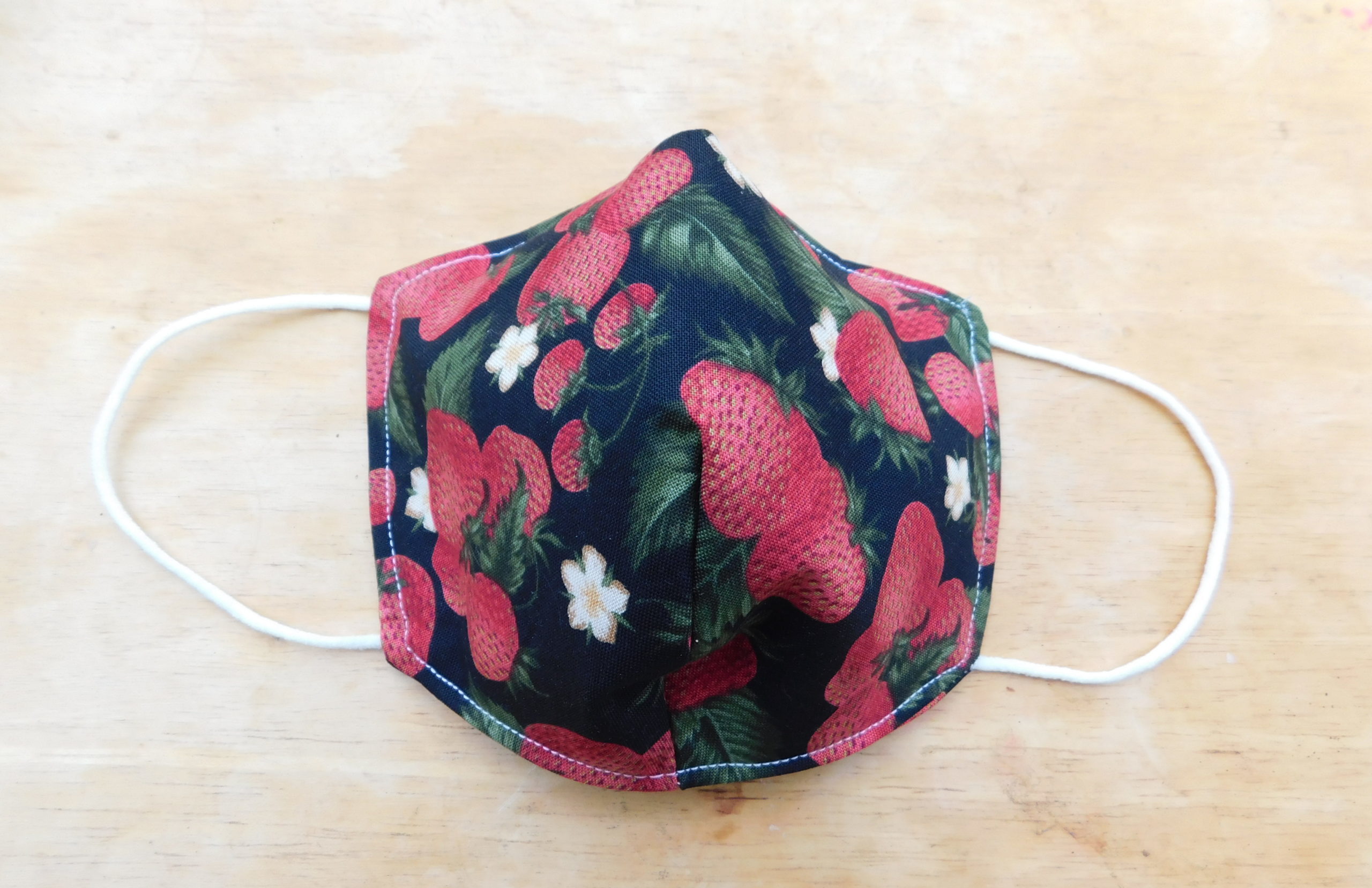
- Instruct employees on proper use of disposable gloves for when dealing with customers or when using gloves as PPE during sanitation practice.
-
- Wash hands before putting on new gloves.
- Remove gloves before breaks, meals or toilet visits.
- Take off gloves in a way that avoids touching the outside of the glove with either hand and dispose.
- Wash hands.
- Put on new gloves before starting work again.
- If gloves are worn at check in or check out, sanitation between transactions must still be observed.
- Encourage employees to arrive each day wearing clean clothes
- Encourage employees to wash their farm clothes separately from other clothes.
Taking these proactive steps will protect your team and your customers and create a positive experience of U-Pick during this pandemic.
We are in this together.
These recommendations were prepared by:
Anusuya Rangarajan, Elizabeth Bihn, Marvin Pritts, and Julie Suarez, College of Agriculture and Life Sciences, Cornell University.
Laura McDermott and Esther Kibbe, Cornell Cooperative Extension.


